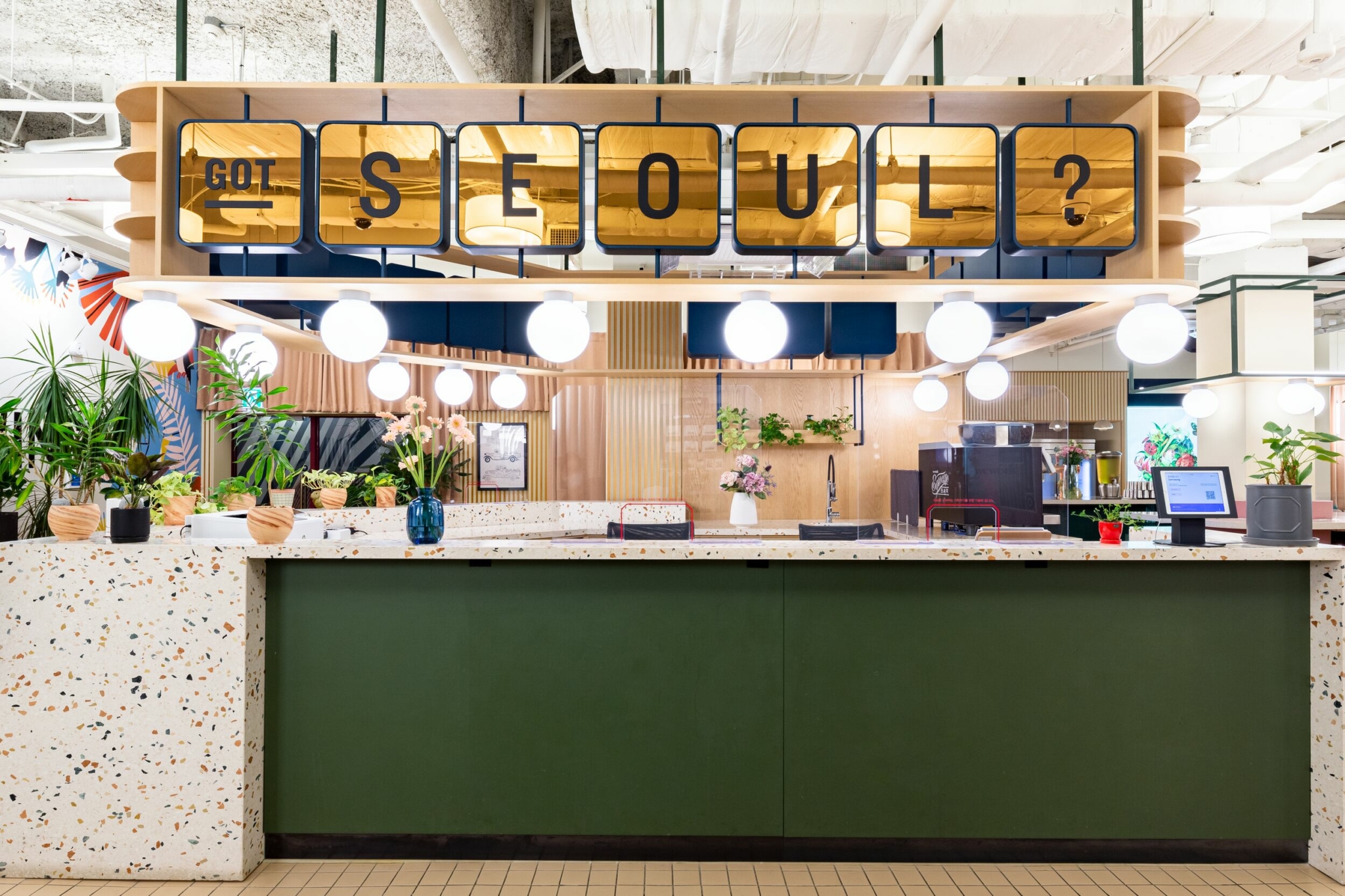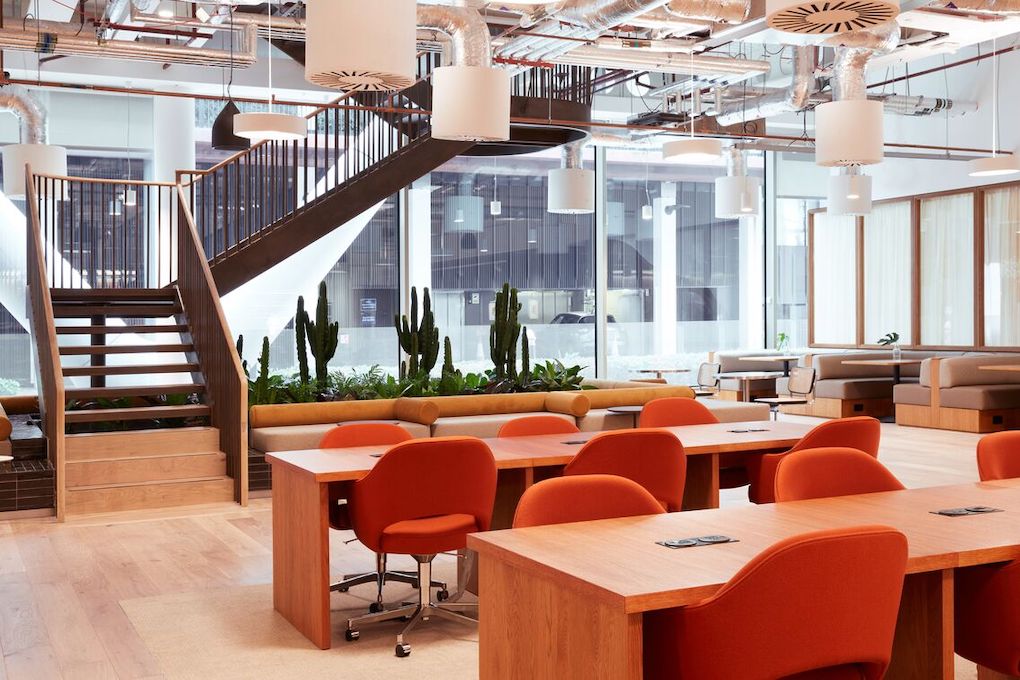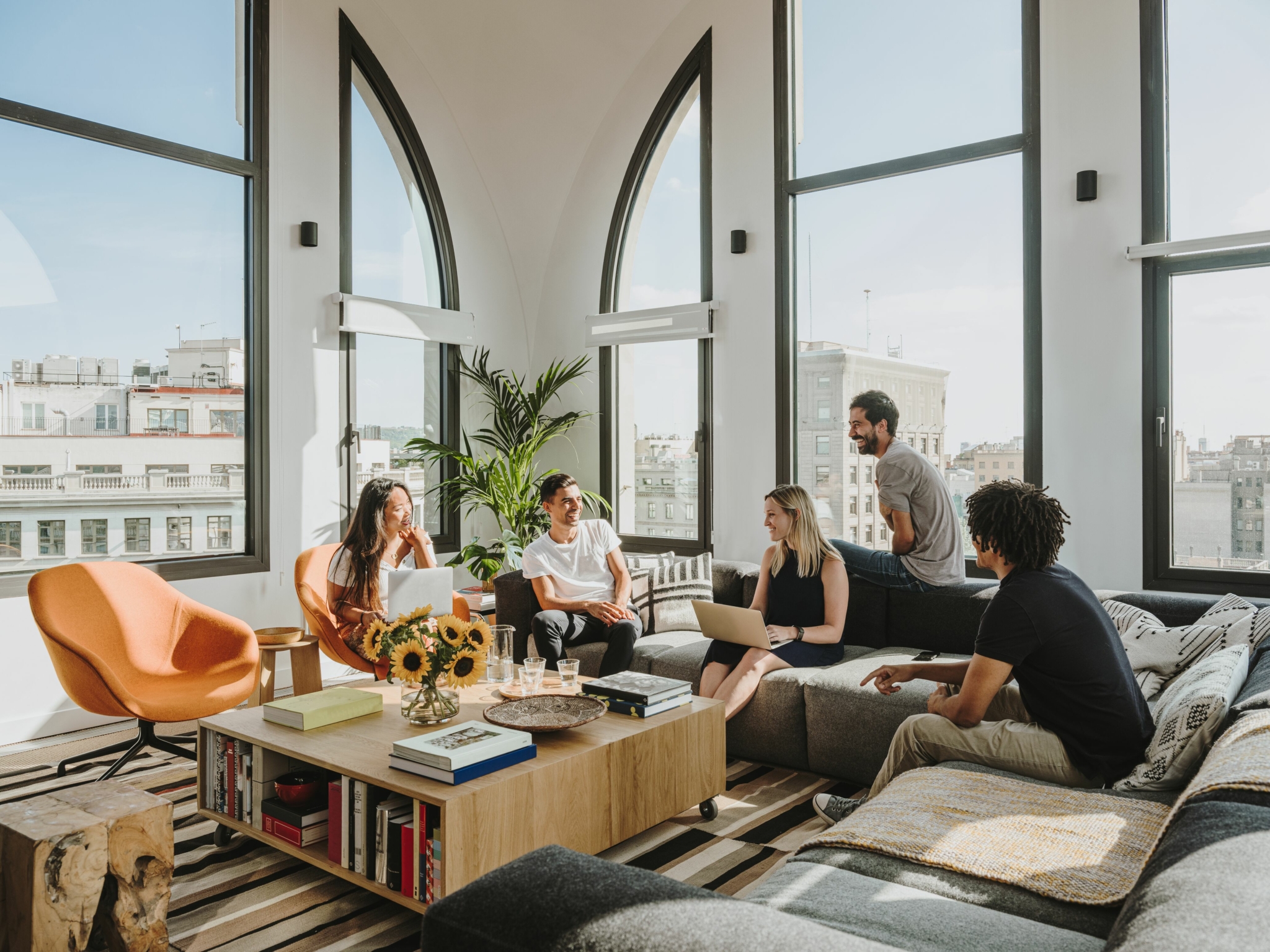The ways we work have fundamentally changed. People no longer seek just work-life balance. They want the power to choose when, where, and how they work. They want the freedom to create their own schedules, to do work they find meaningful, and to be in a space that suits their unique needs. Gone are the days of a one-size-fits-all nine to five. In All the Ways You Work, WeWork members share how they’re reimagining their professional lives and thriving in this new world of work.
During the pandemic, Sarah Crabbe had maintained a positive attitude about mandatory remote work until about early September. After leaving the New York City apartment she shares with her husband and four-year-old and relocating to a bigger space in New Jersey for the summer, Crabbe, a vice president of ad sales, managed to tolerate her company’s policy. Yet with the end of summer came news that her workplace would stay remote until at least March 2021.
“The minute I got back to the city the weekend before Labor Day, I was like, alright, I gotta figure something out—this doesn’t work,” she says.
For Crabbe and many other families, COVID-19 had disrupted a fine-tuned routine. For her, it had been a 5:40 a.m. alarm and then leaving home for a 6 a.m. barre class. Her son would wake up right around when she returned, which gave her just enough time to get ready for the day and be out the door by 8:30 a.m. She’d arrive at her Midtown office by 9 a.m., then alternate between meetings, client lunches, and focused work time at the office until 6 p.m.
When both she and her husband started working from home this past March, she would wake up when her son woke up (“…which sadly is early, but that’s fine,” she says). After squeezing in a remote workout, Crabbe and her husband would prep their child’s remote pre-K workstation, and then she’d start taking calls.
Given the unpredictability of her son’s pre-K schedule (a hybrid model that transitioned back to fully remote in November), the setup was less than ideal. “My husband is on the bed, and I’m over here in the corner of the bedroom while our nanny is in the living room with our son, and they’re getting ready to go. And once they do that, then my husband and I can be in different rooms,” Crabbe says.
Despite having a strong work ethic, Crabbe also fell prey to typical WFH distractions like, “Let me just tidy my drawers, color-code my books, spend 30 minutes cleaning the bathroom.” Being in her apartment was “certainly not the best working environment.” She needed a space that was more conducive to work.
Studies show that working from home during the pandemic seemed to be a success initially. McKinsey reported that 80 percent of people enjoyed working from home; BCG found that 75 percent of workers said they were able to maintain or improve productivity during the first few months of the pandemic. But as time went on, there was a significant decline in performance and satisfaction when it came to collaborative tasks, according to a recent study by WeWork and brightspot strategy. Based on that study, an overwhelming majority of the respondents (90 percent) wanted to return to the office at least once a week. A report from Oracle found that 85 percent of people reported that during COVID-19, issues that arose in a remote work environment are causing sleep deprivation, poor physical health, reduced happiness at home, and impaired interpersonal relationships.
This past September, a friend and WeWork member referred Crabbe to WeWork. “WeWork was really the only thing I considered because I knew someone who had a positive experience here,” she says. The WeWork All Access membership had just been rolled out: a subscription option that gives members access to workspaces in hundreds of WeWork locations around the world.
Because her membership gives her the ability to work from unlimited locations, she’s been able to utilize spaces wherever professional or personal matters take her. And because she lives in downtown New York City, she mostly goes to WeWork 200 Broadway or WeWork 11 Park Place. But after a dentist appointment one day, in Midtown, she took advantage of WeWork 450 Lexington Ave; another day she visited WeWork 12 East 49th St after having lunch with a friend.
Crabbe has enjoyed the light and airy design of the 200 Broadway location, as well as the cozy nooks, and the phone booths that allow for private phone calls and meetings. She likes the fact that the space is “all windows” and is vaguely reminiscent of her old office, which had a big window. When she needs a conference room, she gravitates toward 11 Park Place.
She appreciates that she finally has a dedicated space for work. “The funny part is, when we all used to work in our own offices, you would always have people stopping into your office, derailing you for a quick conversation,” she says. “But you needed those breaks, you know. [Yet] when I go to WeWork now, because I don’t know any of these other people, I still sort of benefit from that feeling of like, ‘I’m focused. I’m in an office,’ which I love.”
The community teams have been an essential part of her experience. “At both 11 Park Place and 200 Broadway, I asked to be shown around on my first visit,” she says. “They were great at helping me!”
With her WeWork All Access membership, Crabbe found a new routine that works for her. She usually visits WeWork locations on Mondays, Thursdays, and sometimes on Wednesdays, usually for half a day or for as long as her work takes. She visits WeWork during bad weather days or when she knows she has a packed schedule of virtual meetings and remote deadlines.
Her son gets back from his activities (park, playtime) around five, and that’s Crabbe’s “signal to put the computer down.” The act of pouring a glass of wine is also a good signal that it’s time to wrap up the workday.
“I think just the routine of leaving the house is something I really like,” she says. Leaving the house has also allowed her and her husband to have post-work chitchat; now they can ask each other, “How was work? What did you do today?” just like in the Before Times. “I’ve heard people say, ‘Family is everything,’ but it’s not supposed to be the only thing. So it’s nice when I go to work, or he goes and takes a long bike ride,” she says, adding that there’s a huge difference between sharing a 900 square feet apartment, as she and her family do, and spreading out in a house with three floors and a basement.
With her new work arrangement, she’s confident that her son transitioning again to 100 percent remote school won’t be as taxing as during the first wave of lockdown. Given her new routine, Crabbe confidently says she’ll use WeWork spaces even more.
Angelica Frey is a writer and translator who covers the arts, fashion, and food. Originally from Milan, she currently lives in Brooklyn.
Rethinking your workspace?










